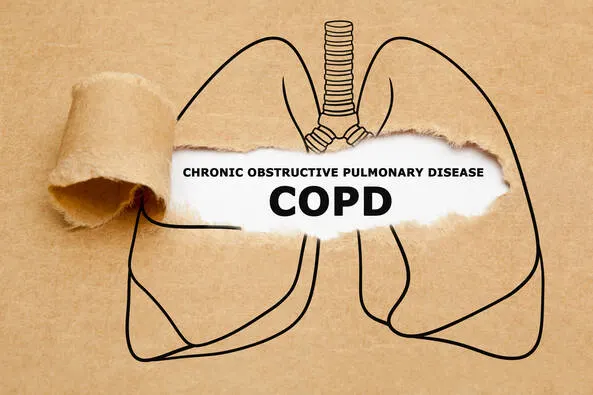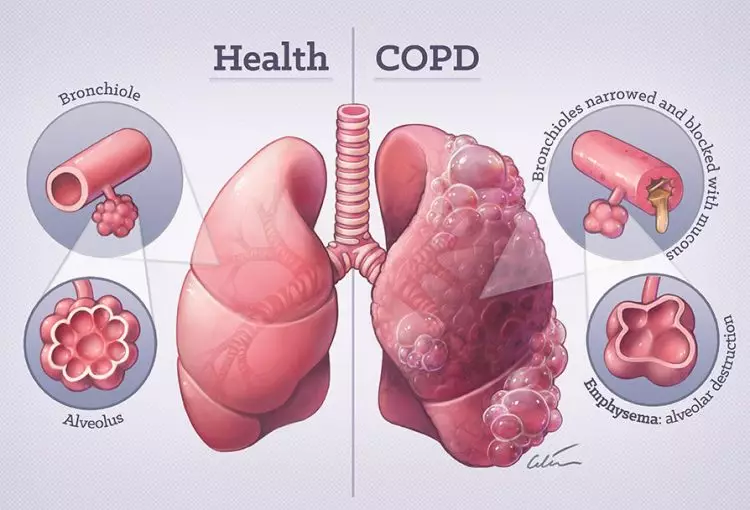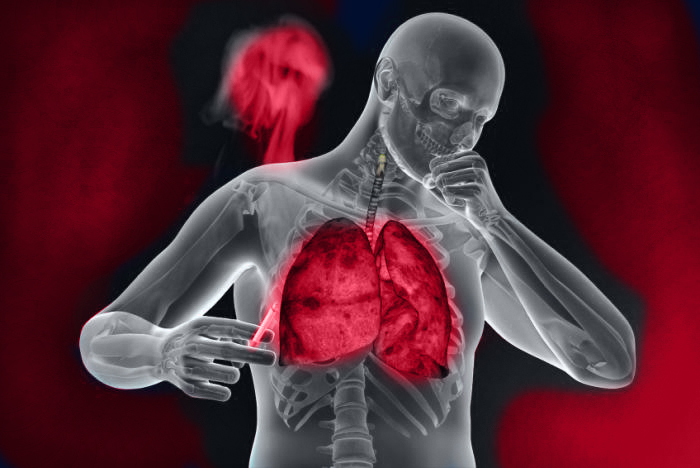
November is COPD Awareness Month—a time to focus on a condition that affects millions of people but remains under-recognized: Chronic Obstructive Pulmonary Disease (COPD). Often called a “silent” respiratory illness, COPD is the third leading cause of death globally, impacting breathing, energy levels, and overall quality of life.
Many people live with COPD without even knowing it, chalking up their shortness of breath or persistent cough to aging or a past smoking habit. But COPD is more than just a part of getting older, and raising awareness can help those at risk recognize the symptoms early, seek treatment, and improve their quality of life.
In this article, we’ll examine COPD, its primary causes, and the people most at risk for developing this chronic lung condition. Understanding COPD better is the first step in managing it and empowering those affected to breathe easier and live healthier.
What is COPD?

Chronic Obstructive Pulmonary Disease (COPD) is a progressive lung disease that makes it increasingly difficult to breathe. This condition includes chronic bronchitis and emphysema, where damaged lung tissue and inflamed airways restrict airflow, leading to symptoms such as chronic cough, wheezing, and shortness of breath. Unlike other respiratory issues that come and go, COPD is persistent and worsens over time.
Symptoms of COPD often develop gradually and can include:
- Persistent cough, often producing mucus
- Shortness of breath, especially during physical activities
- Wheezing
- Tightness in the chest
- Frequent respiratory infections
Many people dismiss these symptoms as normal signs of aging or effects of smoking, which delays diagnosis. But COPD is manageable, especially when detected early, and treatment can slow its progression and improve quality of life.
Read: 8 Healthy Habits to Improve Your Breast Health
Causes of COPD
COPD usually develops after prolonged exposure to substances that irritate and damage the lungs, primarily smoking, but other factors can also play a role:
1. Smoking

Cigarette smoke is the primary cause of COPD, responsible for around 85–90% of cases. Long-term smoking damages the airways and lung tissue, causing inflammation that results in chronic bronchitis or emphysema. While smokers are at high risk, non-smokers exposed to secondhand smoke may also develop COPD.
2. Air Pollution and Occupational Hazards
Exposure to harmful air pollutants, dust, and chemicals in certain workplaces, such as construction, mining, and manufacturing, can damage the lungs over time, putting workers at risk for COPD. Household air pollutants, like smoke from cooking fires or poorly ventilated spaces, can also be risk factors, especially in low-income settings where fuel sources are often more hazardous.
3. Genetic Factors
In rare cases, genetics play a role in COPD. People with a condition known as Alpha-1 Antitrypsin Deficiency are at higher risk for emphysema, even if they’ve never smoked. Alpha-1 Antitrypsin is a protein that protects the lungs from inflammation, and a deficiency can lead to lung damage early in life.
4. History of Respiratory Infections

People who had frequent respiratory infections in childhood may be more prone to developing COPD. Recurrent infections can weaken lung function over time, making individuals more susceptible to chronic lung diseases later in life.
Who is at Risk of COPD?
While COPD can affect anyone, certain groups have a higher risk based on lifestyle, environment, and health history:
- Smokers and Ex-Smokers: The vast majority of people with COPD have a history of smoking, and the risk increases with both the amount and duration of smoking.
- People with Occupational Exposure: Workers exposed to dust, fumes, and chemicals in industries like mining, construction, and textiles have a higher risk of developing COPD.
- Those Living in Polluted Areas: Both outdoor and indoor pollution contribute to lung damage over time. Living in areas with high pollution levels or using biomass fuels for cooking and heating increases COPD risk.
- Genetic Predisposition: People with Alpha-1 Antitrypsin Deficiency are genetically predisposed to COPD, even without smoking. Screening for this genetic deficiency is especially important for people with a family history of lung disease.
- Older Adults: COPD typically develops later in life, usually in individuals aged 40 and above. Aging naturally causes some reduction in lung function, and exposure to pollutants over a lifetime can add to the risk.
Read: The Importance of Self-Exams and Mammograms: Early Detection Saves Lives

COPD may be a progressive and chronic condition, but early diagnosis and lifestyle changes can significantly improve the outlook for those affected. This November, let’s use COPD Awareness Month as an opportunity to learn about this condition, recognize the risk factors, and support those who may be silently struggling with it.
If you or a loved one experience symptoms like chronic cough or shortness of breath, don’t ignore them—speak with a healthcare provider. With early intervention, treatment, and lifestyle adjustments, people with COPD can manage their symptoms and enjoy a better quality of life.
Schedule a check-up with your doctor if you’re at risk or experiencing symptoms. Share this article to spread awareness about COPD and encourage others to recognize the signs and risks associated with this common yet often misunderstood condition.
